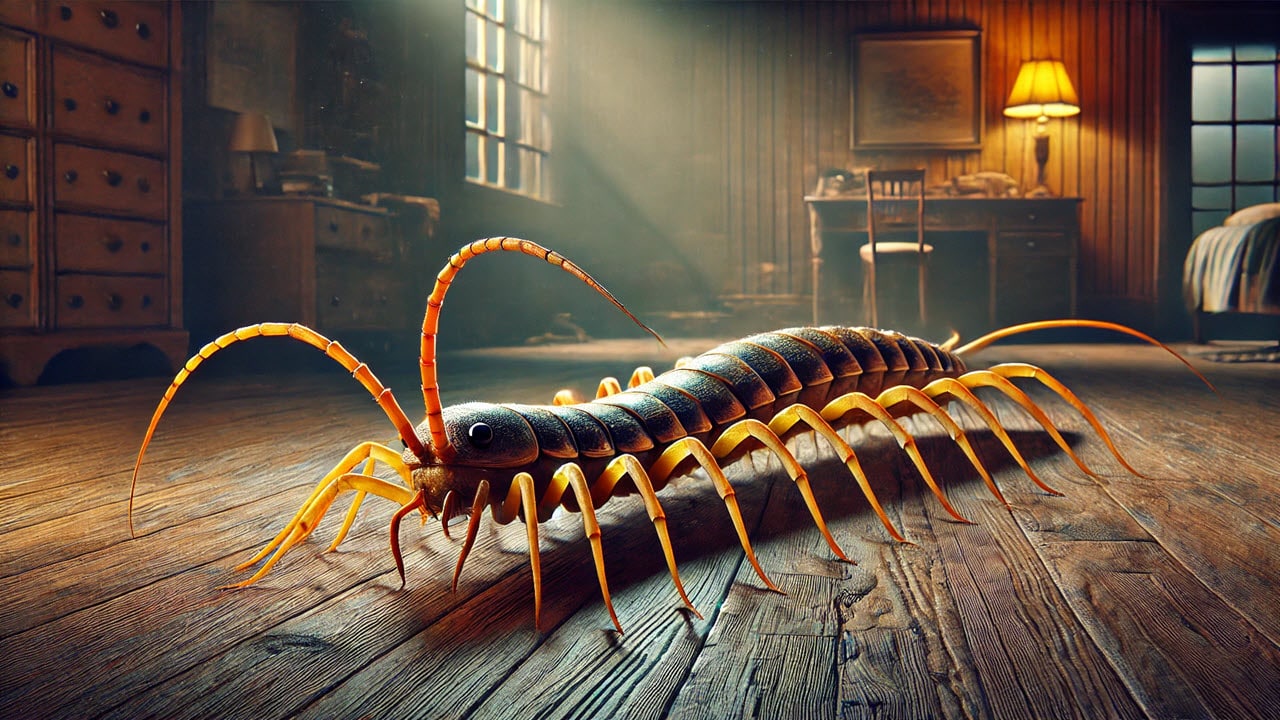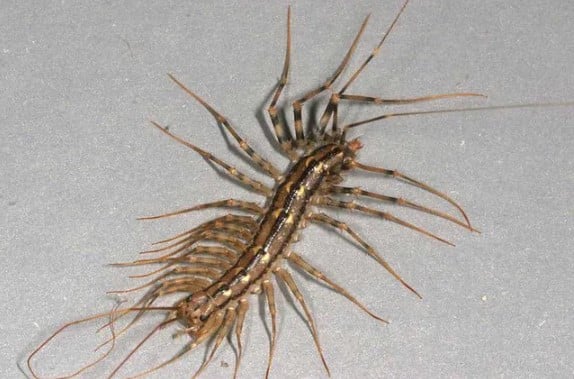
Here in North Carolina, we experienced a hint of the season to come with a week of pleasantly cool temperatures. If one has been paying attention to store shelves, the news, and social media recently, then it should be apparent that the fall season is being celebrated now. Halloween decor has been for sale for months, and autumnal beverages and foods have premiered at nationwide chains. According to the internet, this trend of celebrating Halloween and fall in the middle of summer is known as “Augtober”. In that spirit, I have decided to write this month’s weird and wonderful blog about a small critter that often elicits screams and thoroughly freaks many people out: the house centipede.
Now, wait a minute, some myriapodologists out there may be saying, the house centipede is not actually native to North Carolina, or even to the North American continent. Yes, you got me. However, since this species has spread throughout the world, and can be readily found in North Carolina homes, I am hoping that you, dear readers of my blogs, will indulge me. Well, if it is not native to the Carolinas, or to North American, where is it from? House centipedes, Scutigera coleoptrata, are thought to be indigenous to the Mediterranean region of the world. Accidentally introduced to the Southeastern U.S., this species is now common throughout the country, and has also spread to Australia, Europe, and Asia. They are still a rare occurrence in the United Kingdom, as a recent BBC article explained.

Photo of Scutigera coleoptrata courtesy of The Pennsylvania State University Extension
For some, the house centipedes are the stuff of nightmares. They have a cylindrical body that can be an inch to an inch-and-a-half in length, attached to which are 15 pairs of very slender, banded legs. These pairs of legs increase in length as you progress towards the back end of the animal, with the final pair on adult females being almost twice the length of their body. While most other centipede species lack easily discernable eyes, house centipedes actually have well-developed, faceted eyes. In addition to their unsettling outward appearance, house centipedes are incredibly fast; when people happen upon one, they often witness it scuttling across the floor, looking for a dark, damp place to hide until nightfall. At night, house centipedes hunt small arthropods, including carpet beetles, cockroaches, and silverfish.
Unsettling outward appearance? Check. Seemingly unnatural speed? Check. Predatory? Check. See what I mean about the stuff of nightmares? Take some time to recover from what you have just learned, and then focus on the last sentence of the previous paragraph. House centipedes are hunters, and their prey are common household pests. Thus, while many people have no qualms about squashing this superficially vile creature, others let them live, because they would rather have a home with a guardian house centipede then a home full of cockroaches and silverfish (species which also haunt people’s dreams). House centipedes, weird and wonderful animals that they are, may not be easy on the eye, but you can rest assured knowing that any cockroach that dares cross your threshold will meet a swift end at the hands (well, really prehensors) of a house centipede. Now, granted, if there appears to be a large population of house centipedes in your home, that means there is plenty of food to go around, which in turn means you may have to invest in some pest management against all household arthropods. That unfortunate situation aside, if you happen to come across a house centipede this summer and fall, regain your composure, cease wondering what that sound was that just emerged from your lips, and consider letting it go on its merry way. You never know, it might just have a cockroach to foil.
